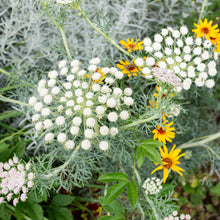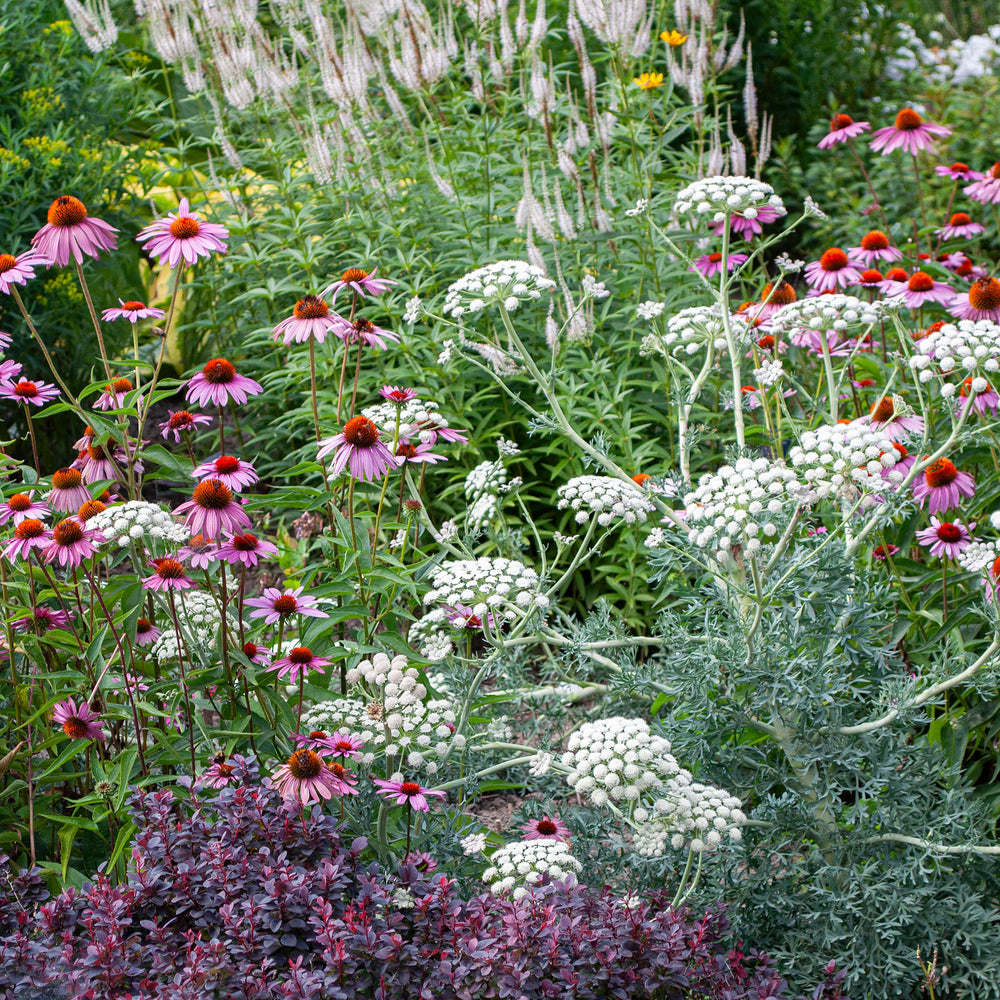SOWING INSTRUCTIONS
Depth:
Surface sow to barely cover (about 1/16”).
Starting Indoors:
Sow indoors 8 weeks before planting out. Cover with a sprinkling of vermiculite and keep at 70°F. If no germination after two weeks, refrigerate for 1 month, then bring back into warmth.
Starting Outdoors:
In fall to spring.
PLACEMENT & CULTIVATION
Moon carrot is a biennial to short-lived perennial, growing rosettes of foliage and a taproot the first year; the following summer, it pulls out the stops in a floral display unrivaled in the Apiaceae family. Native to the Mediterranean regions of Greece, Turkey, and Crimea, where it grows in alkaline soils. Allow some seed to drop after bloom to renew your plantings. At home in gravel and rock gardens plus garden borders in richer soil, its flowers pair well with purple coneflowers and grasses or serve as a focal point in large containers.
Watering Details:
Water regularily the first year until established, then water during especially dry spells. Avoid saturated soils, especially in winter.
Fertilizer:
Mix in about an inch or two of compost prior to planting if soil is poor.
Diseases & Pests:
No major pests or diseases.





































